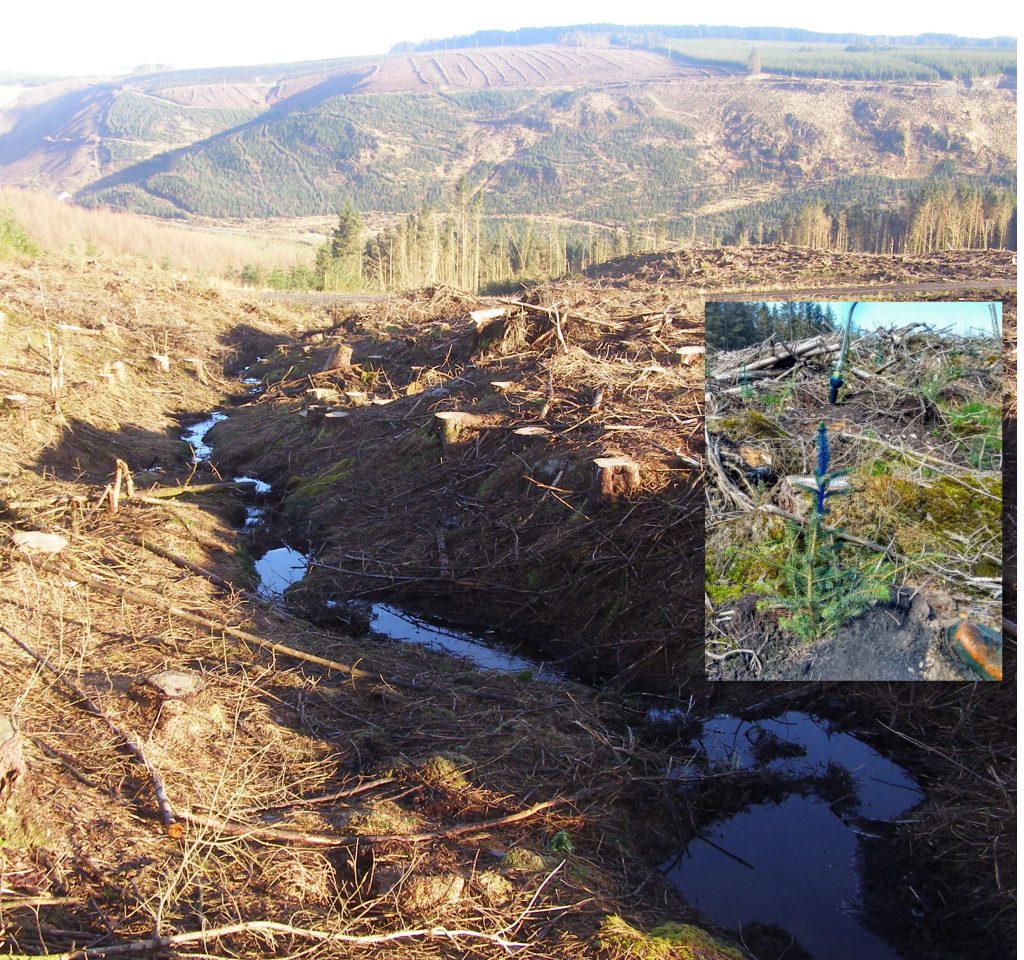A study of chemical runoff following the use of acetamiprid as a pre-treatment and top-up spray to prevent damage from the large pine weevil (Hylobius abietis L.) to young trees was undertaken at a restock site in mid-Wales. The site was specifically selected to pose a high risk of chemical runoff, being a high elevation, headwater catchment with stagnopodzol soils, subject to high rainfall. Water samples were collected before, during, and after each treatment from six points around the site, as well as from a nearby stream that acted as a control.
Only one of the ninety water samples collected detected acetamiprid at levels above the Limit of Quantification of 0.005 µg l-1 (i.e. 0.000,000,005 grams in 1 litre of water) and this appeared to be due to wash-off of residues from the plastic bags the trees had been delivered to the site in, which had been temporarily placed within a dry road drain. The recorded concentration of 0.1022 µg l-1 of acetamiprid was low, being only 20% of the Predicted No Effect Concentration (PNEC) of 0.5 µg l-1. Neither of the top-up spray applications resulted in water contamination at any of the sampling points.
The results show that the good forestry practice measures employed were effective in preventing contamination of stream waters by acetamiprid. The use of 10 m buffers between forest drains and receiving streams, as per standard good forestry practice in the UK, should be more than adequate to prevent any chemical runoff contaminating watercourses. However, it is recommended that forest practice is further tightened in relation to the placement and handling of planting bags on site. Bags should not be placed within or near road or forest drains, and they should be removed from the site at the end of each day.

